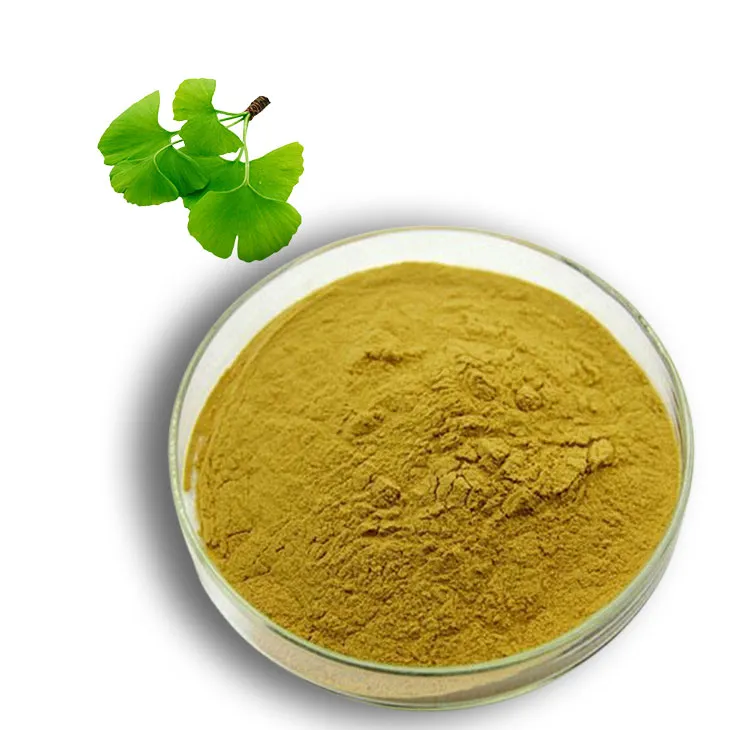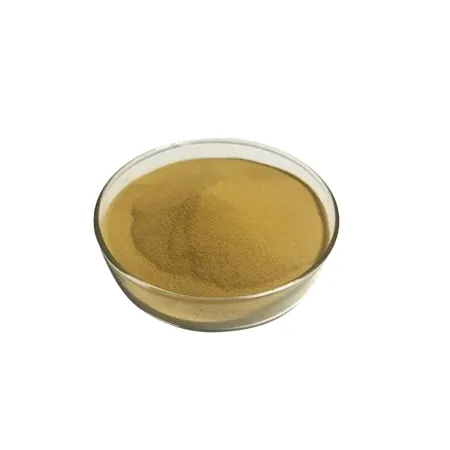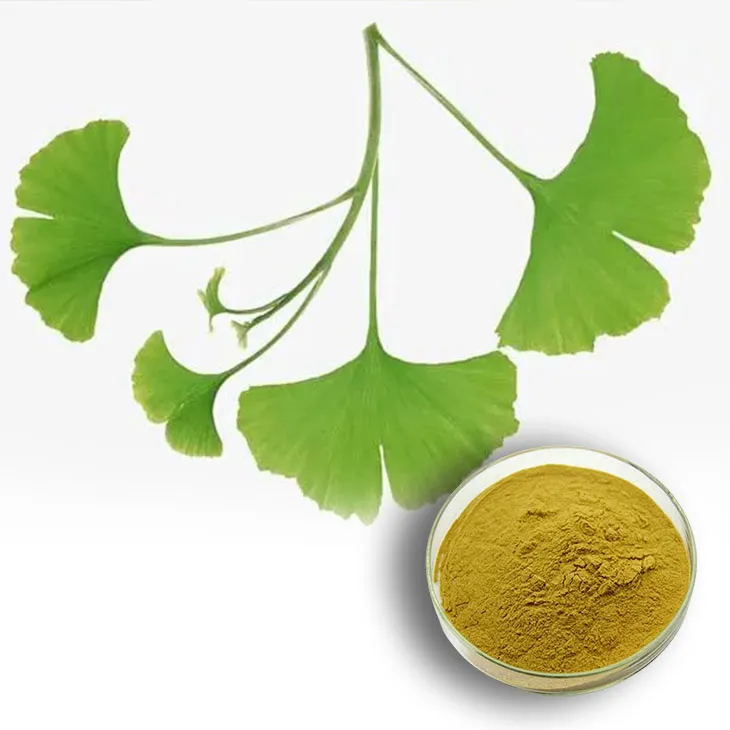- 0086-571-85302990
- sales@greenskybio.com
Ginkgo biloba extract can reduce hypertension.
2024-11-13

1. Introduction
Hypertension, or high blood pressure, is a prevalent health condition that affects a significant portion of the global population. It is a major risk factor for various cardiovascular diseases, including heart attacks, strokes, and heart failure. Ginkgo biloba, a well - known plant with a long history of use in traditional medicine, has been the subject of numerous studies regarding its potential health benefits. In particular, Ginkgo biloba extract (GBE) has shown promise in relation to hypertension.

2. The composition of Ginkgo biloba extract
GBE contains a variety of bioactive compounds. Flavonoids and terpenoids are two major groups of substances present in it. Flavonoids, such as Quercetin, kaempferol, and isorhamnetin, are known for their antioxidant properties. They can scavenge free radicals in the body, which are often associated with cellular damage and various diseases. Terpenoids, including ginkgolides and bilobalide, have been found to have anti - inflammatory and neuroprotective effects. These components in GBE may work together to potentially influence blood pressure regulation.

3. Scientific research on GBE and hypertension
3.1. In vitro studies
Some in vitro studies have explored the mechanisms by which GBE may affect blood pressure. For example, research has shown that certain compounds in GBE can interact with endothelial cells. Endothelial cells line the interior surface of blood vessels and play a crucial role in vascular function. By modulating the release of nitric oxide (NO) from endothelial cells, GBE may have an impact on blood vessel dilation. Nitric oxide is a key molecule that relaxes blood vessels, thereby reducing blood pressure. Studies have demonstrated that GBE can enhance the production or activity of NO in endothelial cells, which could contribute to its hypotensive effects.
3.2. Animal studies
Animal models have also been used to investigate the relationship between GBE and hypertension. In hypertensive rats, for instance, administration of GBE has been shown to lead to a decrease in blood pressure. These effects may be related to the improvement of endothelial function, as well as the reduction of oxidative stress and inflammation in the blood vessels. GBE may also influence the activity of the renin - angiotensin - aldosterone system (RAAS), which is an important hormonal system involved in blood pressure regulation. In some animal studies, GBE has been found to suppress the overactivity of the RAAS, which helps to lower blood pressure.
3.3. Human clinical trials
Several human clinical trials have been conducted to evaluate the efficacy of GBE in reducing hypertension. However, the results have been somewhat mixed. Some trials have reported a significant reduction in blood pressure in patients taking GBE supplements. These patients often showed improvements in both systolic and diastolic blood pressure values. For example, a study involving a group of mild - to - moderate hypertensive patients found that after a certain period of GBE supplementation, their average blood pressure decreased by a measurable amount.
On the other hand, some other clinical trials did not observe a clear - cut hypotensive effect of GBE. There could be several reasons for these inconsistent results. Variations in the study design, such as the dosage of GBE used, the duration of the trial, and the characteristics of the patient population, may all play a role. Additionally, the quality and purity of the GBE products used in different trials may also vary, which could affect the outcomes.

4. Potential mechanisms of action
4.1. Endothelial function improvement
As mentioned earlier, endothelial function is critical for blood pressure regulation. GBE may improve endothelial function through multiple pathways. By enhancing the antioxidant capacity of endothelial cells, it can protect these cells from oxidative damage. Oxidative stress can impair endothelial function by reducing the availability of NO. GBE's antioxidant compounds can neutralize free radicals, thereby preserving NO production and promoting blood vessel dilation.
GBE may also modulate the expression of certain genes and proteins in endothelial cells. For example, it can influence the expression of endothelial nitric oxide synthase (eNOS), the enzyme responsible for NO synthesis. By up - regulating eNOS expression or activity, GBE can increase NO production, leading to vasodilation and a subsequent reduction in blood pressure.
4.2. Anti - inflammatory effects
Chronic inflammation is often associated with hypertension. Inflammatory mediators can cause endothelial dysfunction and promote the constriction of blood vessels. GBE's anti - inflammatory properties may help to counteract these processes. The terpenoids in GBE, such as ginkgolides, have been shown to inhibit the activation of inflammatory cells, such as macrophages and neutrophils. By reducing the production of inflammatory cytokines, GBE can potentially improve blood vessel health and lower blood pressure.
4.3. Influence on the RAAS
The renin - angiotensin - aldosterone system is a complex hormonal network that regulates blood volume and blood pressure. Renin is an enzyme that initiates a cascade of reactions leading to the production of angiotensin II, a potent vasoconstrictor. Aldosterone, another hormone in this system, promotes sodium and water retention, which can increase blood volume and blood pressure.
GBE may interfere with the RAAS at multiple points. It has been suggested that GBE can inhibit the activity of renin, thereby reducing the production of angiotensin II. Additionally, GBE may also affect the receptors for angiotensin II, blocking its vasoconstrictor effects. By modulating the RAAS, GBE can contribute to blood pressure reduction.

5. Practical applications and considerations
5.1. Dosage and supplementation
When considering the use of GBE for hypertension, the appropriate dosage is an important factor. In general, the recommended dosages in some studies range from 120 - 240 mg per day of standardized GBE. However, it is crucial to note that different products may vary in their potency and purity. Therefore, it is advisable to consult a healthcare provider before starting GBE supplementation.
Moreover, GBE supplements should be obtained from reliable sources. There are many products on the market, and not all of them may be of high quality. Poor - quality GBE products may contain contaminants or may not have the correct composition of bioactive compounds, which could affect their efficacy and safety.
5.2. Safety and side effects
GBE is generally considered safe for most people when taken at appropriate dosages. However, some individuals may experience side effects. Common side effects may include mild gastrointestinal discomfort, such as nausea, stomachache, or diarrhea. In rare cases, more serious side effects such as bleeding problems may occur, especially in people who are taking blood - thinning medications simultaneously. Therefore, it is essential to inform healthcare providers about all medications and supplements being taken before starting GBE supplementation.
5.3. Combination with other treatmentsFor hypertensive patients, GBE should not be used as a substitute for conventional medical treatments. Instead, it may be considered as an adjunct therapy. Combining GBE with lifestyle modifications, such as a healthy diet, regular exercise, and stress management, may potentially enhance its blood - pressure - reducing effects. In some cases, under the supervision of a healthcare provider, GBE may also be combined with antihypertensive medications. However, close monitoring is required to ensure safety and efficacy, as there may be potential interactions between GBE and medications.
6. Conclusion
In conclusion, Ginkgo biloba extract shows potential in reducing hypertension through various mechanisms, including improving endothelial function, exerting anti - inflammatory effects, and influencing the renin - angiotensin - aldosterone system. However, the evidence from human clinical trials is not entirely consistent, and more research is needed to further clarify its efficacy and safety. When considering the use of GBE for hypertension, appropriate dosage, product quality, and safety considerations must be taken into account. Overall, while GBE may offer a complementary approach to blood pressure management, it should be used in conjunction with standard medical care.
FAQ:
1. How does Ginkgo biloba extract reduce hypertension?
There are several proposed mechanisms. Ginkgo biloba extract may improve endothelial function. The endothelium plays a crucial role in regulating blood pressure. By enhancing endothelial - derived relaxing factors, it can help to dilate blood vessels, thus reducing blood pressure. Also, it may have antioxidant effects. Oxidative stress is associated with hypertension, and the antioxidant properties of Ginkgo biloba extract can counteract this stress, potentially reducing blood pressure.
2. Is Ginkgo biloba extract a substitute for traditional hypertension medications?
No. While Ginkgo biloba extract may have a beneficial effect on reducing blood pressure, it is not a substitute for traditional hypertension medications. These medications have been extensively studied and proven effective in controlling blood pressure. Ginkgo biloba extract can be used as a complementary approach, but patients should always consult their doctor before making any changes to their hypertension treatment plan.
3. What is the recommended dosage of Ginkgo biloba extract for hypertension?
The recommended dosage can vary depending on factors such as the individual's health status and the form of the extract. Generally, for general health benefits related to blood pressure, a dosage of 120 - 240 mg per day of standardized Ginkgo biloba extract (containing 24% flavone glycosides and 6% terpene lactones) has been studied. However, it is crucial to note that this should be determined under the guidance of a healthcare professional.
4. Are there any side effects of using Ginkgo biloba extract for hypertension?
Yes, there can be side effects. Some common side effects may include headache, dizziness, and gastrointestinal problems such as nausea and diarrhea. In addition, Ginkgo biloba extract can interact with certain medications, for example, anticoagulant and anti - platelet drugs. So, it is essential to inform your doctor if you plan to use Ginkgo biloba extract, especially if you are taking other medications.
5. How long does it take for Ginkgo biloba extract to show an effect on hypertension?
The time it takes to show an effect can vary among individuals. Some people may notice a slight improvement in blood pressure within a few weeks, while for others, it may take several months. It depends on factors like the severity of hypertension, overall health, and individual response to the extract.
Related literature
- The Effects of Ginkgo biloba Extract on Blood Pressure: A Meta - analysis"
- "Ginkgo biloba and Cardiovascular Health: Insights into its Role in Hypertension Management"
- "Potential Mechanisms of Ginkgo biloba Extract in Reducing Hypertension"
- ▶ Hesperidin
- ▶ Citrus Bioflavonoids
- ▶ Plant Extract
- ▶ lycopene
- ▶ Diosmin
- ▶ Grape seed extract
- ▶ Sea buckthorn Juice Powder
- ▶ Fruit Juice Powder
- ▶ Hops Extract
- ▶ Artichoke Extract
- ▶ Mushroom extract
- ▶ Astaxanthin
- ▶ Green Tea Extract
- ▶ Curcumin
- ▶ Horse Chestnut Extract
- ▶ Other Product
- ▶ Boswellia Serrata Extract
- ▶ Resveratrol
- ▶ Marigold Extract
- ▶ Grape Leaf Extract
- ▶ New Product
- ▶ Aminolevulinic acid
- ▶ Cranberry Extract
- ▶ Red Yeast Rice
- ▶ Red Wine Extract
-
Calendula Extract
2024-11-13
-
Panax Ginseng Leaf Extract
2024-11-13
-
Lavender Extract
2024-11-13
-
Oat Straw Extract Powder
2024-11-13
-
Bamboo Leaf extract
2024-11-13
-
Curcumin
2024-11-13
-
Sea buckthorn oil
2024-11-13
-
Grape Seed Extract
2024-11-13
-
Polygonum Cuspidatum Extract
2024-11-13
-
Epimedium extract powder
2024-11-13





















